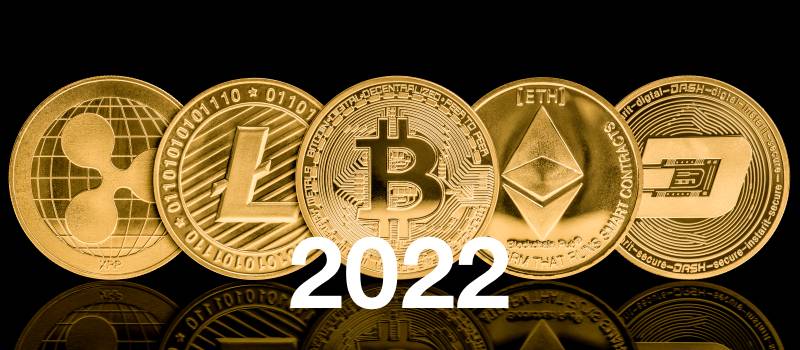Whale Alert reported in the beginning of last week, that a staggering 718.3 million XRP had been kicked over by several crypto asset companies – Ripple, Binance and two more digital exchanges. Over half of that amount was sent by Ripple Labs in two massive lumps. The total worth of the transferred XRP was close to six-hundred million US dollars. Ripple wired over half a billion XRP, as shown by data shared by the major crypto tracking platform, when it conducted two mammoth-sized transactions of 460,669,182 and 120,000,000 XRP, which totaled $364,871,463 and $95,718,622 in fiat currency, respectively. The transfers were made from the same Ripple wallet which had zero coins left after the transfer, and the funds went to different addresses belonging to the company.
Additionally, 137.7 million XRP was sent from Binance and ODL platforms, and yet another three impressive XRP transactions (however, they were not as large as the ones made by Ripple) were spotted by Whale Alert prior to those performed by Ripple. Binance shifted 80 million XRP between its wallets, and an anonymous wallet moved 20 million XRP to Bitso – the first crypto unicorn in Latin America and the leading exchange in Mexico. According to the data from BIthomp website, this crypto was sent from the US-based Bittrex exchange. Finally, Bitso shifted 17,700,000 XRP internally, while another transaction from Bittrex delivered 20 million XRP to another Ripple ODL corridor – Bitstamp, located in Luxembourg.

A BRITISH MAN HAS SEARCHED THROUGH A VAST LANDFILL FOR 8 YEARS TO FIND HIS $350 MILLION LOST BITCOIN WALLET
While doing some spring cleaning back in 2013, a British man threw his old PC hard drive into the trash, which quickly joined the mountain of rubbish at the local landfill site in Newport, Wales, UK. James Howells did not know it at the time, but that same hard drive contained a wallet filled with 7,500 Bitcoin, which was then worth a cool $665,000 (this was still in the early crypto days). Well, now that wallet is worth $357 million. Once realizing his mistake, Mr. Howells began a frantic search for the hard drive and has been searching ever since. Over the past eight years, James Howells has been crawling through mounds of rubbish in the desperate search for his $350 million junkyard nest egg. In an interview with the newspaper The Guardian back in 2013, Howell stated, “I had a word with one of the guys down there, and explained the situation. And he actually took me out in his truck to where the landfill site is, the current ditch they’re working on. It’s about the size of a football field, and he said that something from three or four months ago would be about three or four feet down.”
He continued, “I’m at the point where it’s either laugh about it or cry about it. Why aren’t I out there with a shovel now? I think I’m just resigned to never being able to find it.” After that interview, it was said that Howells had all but resigned himself to the fact his fortune would never be claimed. But soon thereafter, he began to search all by himself and now he still believes there is hope that the drive is both reachable and readable even in its deteriorated state. In a last-ditch effort, he has now recruited residents of his local town to join the hunt, with the promise of millions if the search succeeds. The odds are certainly stacked against him, and this was made worse by the Newport City council’s refusal to permit any volunteers to enter the site. CNBC recently reported that in explaining their reasons for denying permission to search the mountains of garbage in the landfill, the city council cited the ecological damage which trawling through buried rubbish can cause, that there was a lack of a permit for anyone to search the rubbish, and that there was a great probability that the hard drive was already destroyed. Sadly, if Mr. Howells cannot find the drive, his Bitcoin is lost forever. Like most crypto, Bitcoin is untraceable, and in the early days of mining, one could not back-up one’s wallet. These issues have led to unfortunate scenarios where people have lost the physical drives that their crypto is on, or they had forgotten their passwords – such as the story of another man who has just a few guesses left before he is forever locked out of his $240 million Bitcoin fortune.
Commit it to memory, people!

BITCOIN, ETHEREUM, AND OTHER CRYPTOS MAY BECOME A LITTLE LESS VOLATILE IN 2022
Bitcoin prices have been on a wild ride this year, like most years past, and even so, they are set to finish 2021 sharply higher than where they began it. One Bitcoin currently trades for just under $51,000, a stunning surge of 68% from last January levels. But the top crypto is also down nearly 30% from its record high of almost $69,000, which it hit in November. So, what could be next for Bitcoin and other cryptocurrencies? There is no denying that crypto has gone mainstream – the total value of all cryptocurrencies in circulation stands at more than $2.2 trillion, with Bitcoin accounting for about $920 billion of that total. Ethereum is starting to close the gap. Having taken the art and collectibles world by storm, Ethereum, which is a popular crypto for the smart contracts and non-fungible tokens (NFTs), has a market value of $475 billion. ETH prices have more than quintupled this year, going from around $730 per coin to $4,000.
There are now several Bitcoin exchange-traded funds (ETFs) for individual investors to choose from, and ETFs which will invest in other top cryptos could be coming very soon. Nick Elward, senior vice president and head of institutional product and ETFs at Natixis Investment Managers, recently stated, “The next possible step is for additional ETFs for other coins to launch. There probably will be an Ether ETF in early 2022.” Major professional and institutional investors, including top fund managers George Soros and Stanley Druckenmiller, have been investing in crypto. Still, the latest pullback is a stark reminder of how notoriously volatile Bitcoin and other crypto prices can be. Many investors rushed into Bitcoin in 2017 and watched prices surge from about $1,000 per coin to a little below $20,000 by December of that year. Then came the crash, with Bitcoin plunging to as low as $3,500 by the end of 2018. Those prices obviously have recovered — and then some — but it took until December 2020 before the coin got back to the $20,000 mark.
Assuming these rapid swings in crypto prices are here to stay, the key, experts say, is for investors to learn to stomach them and ride out the inevitable ups and downs. Anton Chashchin, managing Partner of Bitfrost, a digital assets service provider, said in an email to CNN Business, “More than once we have observed a correction in the market. If institutional investors begin to take profits, then it can cause a ripple effect.” He added that large, institutional firms will likely continue to flock to Bitcoin because they see it as a potential hedge against inflation and rising interest rates, and this could hurt traditional government-backed currencies. His email went on to say, “Even if the source of institutional investor interest is the Fear of Missing Out (FOMO), all of the institutional decisions have been made after careful consideration. These firms have come around to the potential benefits of cryptos.” However, he believed that this increase in the adoption and legitimacy of cryptocurrencies also will likely help to mitigate some of its volatility. Prices may still move sharply, but the shifts may not be as violent as in the past few years.
John Wu, president of Ava Labs, an Ethereum-compatible blockchain firm, looked at it this way: “Having larger institutions with deeper pockets and steadier hands buying cryptos will help. They can withstand the volatility. We expect more dispersion in the crypto world. Prices will move more based on adoption. Cryptos won’t be trading in tandem as much.” Natixis Investment Manager’s Nick Elward also believes that more fund managers will be looking closely at cryptocurrencies, and that they may likely move beyond passively run Bitcoin ETFs that simply mirror the direction of Bitcoin futures. “Active is a logical fit for crypto investors. I expect more managers in there analyzing which are the most appropriate ones to buy,” he said. He felt that crypto is a natural extension of the so-called alternative investment world, which is a group of assets beyond stocks and bonds that typically includes gold and other precious metals. Some experts believe that Ether and the world’s third most valuable cryptocurrency, Binance coin, could continue to gain market share versus Bitcoin. “You have to look at the utility of cryptos. Ether could eventually be bigger than Bitcoin. It’s the rails for NFT transactions,” said Alex Lemberg, CEO of the Nimbus Platform, a decentralized finance lending firm.

RIPPLE COULD PUSH HIGHER AND OPEN THE PATH FOR NEW CRYPTO ONCE THE SEC SUIT AGAINST RIPPLE LABS ENDS
A resolution of the SEC suit could eventually allow cryptos to be more easily bought in the U.S. Ripple (CCC: XRP-USD) has generally been drifting down over the last month. After peaking on Nov. 10 at $1.33 per token, it has, more or less, been on a steady slide ever since then. By December 12th, XRP-USD stood at 84.55 cents, and has now rebounded back to about 92 cents. While Ripple was being dragged along by prevailing crypto trends for the first three weeks of December, its legal battle with the Securities and Exchange Commission (SEC) could be a game changer for the crypto world. A keen observation would lead one to see very clearly that Ripple has been following the paths that Bitcoin and Ethereum carve, albeit on a more pronounced basis. This means that it tends to have more volatility and variance, but its direction still seems to be set by Bitcoin and Ethereum. Currently, XRP-USD is well below its peak of $1.839 on April 13. Nevertheless, so far this year, it is still up 256% year-to-date from 23.744 cents at the end of last December 2020.
Ripple is now the 8th largest cryptocurrency in the world and has a market cap of right around $40 billion. It’s just below USD Coin (CCC: USDT-USD), a stablecoin with a market value of $41 billion, and Cardano (CCC: ADA-USD), which has a market value of around $45 billion. So, just what is the legal battle with the SEC all about? Ripple’s parent organization, Ripple Labs, the promoting company for XRP-USD, is in the middle of a major battle with the SEC stemming from whether the sale of XRP-USD tokens is considered a sale of unregistered securities, as the SEC claims. In November, Ripple had gone as far as outlining their own vision for the future of a cryptocurrency regulatory framework in the U.S. Brad Garlinghouse, the CEO of Ripple Labs, told CNBC that he thinks that the case is nearing an end. According to Coin Telegraph online magazine, Garlinghouse told CNBC that despite the slow-moving judicial process, the case seems to have made progress. He said he believes that the case will be over in 2022.
More importantly, he said that the judge in the case realizes that the issues deal more than just with Ripple Labs. He said that he liked the questions from the judge in the case. Even more interesting is the fact that Ripple is looking to do an initial public offering (IPO) after the case is resolved, and this will be very important because almost all of the new issues of cryptocurrencies these days have been in foreign markets, not the U.S. Other than the recent crypto loans made by chains that operate on Polkadot (CCC: DOT-USD), almost all of the initial coin offerings (ICOs) have been by non-U.S. corporations and by non-profit corporations. These coins then begin trading on non-U.S. exchanges and only some eventually show up in the U.S. This is what makes it difficult to buy the handful of the many thousands of cryptocurrencies available around the world. There are only about 200 or so cryptos that trade in dollars on Coinbase Global (NASDAQ: COIN) and Crypto.com.
Once the lawsuit ends, particularly if it end in Ripple Lab’s favor, the rules on listing currencies and ICOs, along with other major issues for U.S. investors, could be much clearer. It would also allow more cryptos to be listed in the U.S. and for companies that sponsor them to do IPOs and ICOs. If that happens, expect to see Ripple move significantly higher as investors look forward to the Ripple Labs IPO.

SHIBA INU CAN EXPECT A MAJOR REBOUND IN 2022 AS LOSS HARVESTING FADES
Shiba Inu (CCC: SHIB-USD) has had a rough time in the last several months after peaking at $0.00008719, which amounted to 0.87 ten-thousandths of one dollar, on October the 27th. Now trading for 0.3829 ten-thousandths of one dollar, that essentially means it has dropped about 58% in less than two months, which is a dramatic move, and likely reflects a large amount of tax-related selling before the end of the year. Investors wanting to take advantage of tax losses before the end of the year, this alone could have led to much of the selling. SHIB-USD was at a recent peak of 52.8 ten-thousandths of one cent on November 30th, and so, just in the last 28 days, it has dropped from 52.8 to 38.29 (ten-thousandths of one cent), or down about 30%. However, it is believed that once the new year begins, the downward pressure from tax-related selling should go away and this could lead to a major rebound in the crypto’s price. The only problem with this theory is that it has not been tested since Shiba Inu has not been around showing the major gains it had this year for long enough.
A year ago, SHIB-USD was much lower than it is today, and it was essentially not trading at the time. For all intents and purposes, everyone who bought Shiba Inu before October 21st has a profit, while virtually everyone who bought after that date, and who have held onto it, now have an unrealized loss of some sort. A good many of these people are selling now, and if we look at BTC and ETH for similar historical examples at the end of last year, we can find similar patterns. For example, Bitcoin peaked on November 30th, 2020, at $19,625 and later dropped to a trough of $18,264 by December 10th, 2020. After that, BTC-USD took off and started climbing. The same pattern occurred last year with Ethereum. For example, a year ago, on December 18th, 2020, ETH-USD peaked at $659.30, and later, by December 22nd, it had dropped to $583.71. That represents a drop of 11.5% in a few short days before the end of the year. It probably felt similar to today that the selling was going to continue for the foreseeable future. Of course, it didn’t, and today, one year later, ETH-USD is around $4000, or almost 6.8 times the price a year earlier.
By the way, Ethereum is now well off of its highs earlier last month when it peaked at $4,812 on November 7th. It’s now down about 14% to $4,067 from its peak. This is not the same as the 30% drop that Shiba Inu has taken. But that might be expected, given that Shiba Inu has a market cap of $17.25 billion, vs. the $470 billion market cap with Ethereum. In other words, the smaller digital currency will tend to have higher volatility, and so this greater drop is not out of the ordinary. Important to remember that this mechanism works on the upside as well. If we look at the patterns, investors in Shiba Inu now should expect to make a much higher return on investment (ROI) than those in Ethereum over the next year.
The post <h5>Digital Asset Insights #47</h5> <h3>718.3 Million XRP Shuffled By Ripple Labs And Its Major ODL Platforms</h3> appeared first on JP Fund Services.
Tradersdna is a leading digital and social media platform for traders and investors. Tradersdna offers premiere resources for trading and investing education, digital resources for personal finance, market analysis and free trading guides. More about TradersDNA Features: What Does It Take to Become an Aggressive Trader? | Everything You Need to Know About White Label Trading Software | Advantages of Automated Forex Trading




































